Project Jukebox Survey
Help us redesign the Project Jukebox website by taking a very short survey!
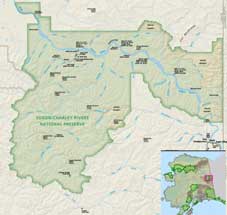 Yukon-Charley Rivers National Preserve encompasses approximately 2.5 million acres of land along the Yukon River in east-central Alaska between the communities of Eagle on the US-Canadian border and Circle, approximately 170 miles downstream. Major waterways within the preserve are the Yukon and Charley Rivers, the Tatonduk River, Nation River and Kandik River. Historically, there were a number of communities associated with mining activities scattered throughout the preserve, however very little evidence of these towns remains today. In addition, a number of historic cabins are located along the two major rivers that supported either small mining operations or trapping. Today, some of these are still utilized by local residents as part of their subsistence practices.
Yukon-Charley Rivers National Preserve encompasses approximately 2.5 million acres of land along the Yukon River in east-central Alaska between the communities of Eagle on the US-Canadian border and Circle, approximately 170 miles downstream. Major waterways within the preserve are the Yukon and Charley Rivers, the Tatonduk River, Nation River and Kandik River. Historically, there were a number of communities associated with mining activities scattered throughout the preserve, however very little evidence of these towns remains today. In addition, a number of historic cabins are located along the two major rivers that supported either small mining operations or trapping. Today, some of these are still utilized by local residents as part of their subsistence practices.
The Yukon-Charley Rivers National Preserve Project Jukebox is comprised of 36 oral history interviews that were conducted in 1991 with a wide range of people involved with, or impacted by the creation of Yukon-Charley Rivers National Preserve. The narrators include men, women, trappers, miners, educators, historians, archeologists, biologists and government bureaucrats. Some had been associated with the upper Yukon for entire lifetimes or were long-time residents of  Eagle, Circle, and Central. Others were relative newcomers to the region, such as those living within the Preserve boundaries during what has been labeled the "River People" era (1960s through the 1970s). Still others hunted, trapped, fished, or mined within the Preserve. And finally, some were employees of the National Park Service, the federal agency responsible for management of the Preserve. Subject matter varies from narrator to narrator and includes Alaska Natives, trapping, mining, subsistence living, historical personalities who lived on the river, lifestyles, gender division of work in the Alaskan bush, transportation, dog teams, airplanes, and, of course, the Yukon River as a force that shaped society along its banks.
Eagle, Circle, and Central. Others were relative newcomers to the region, such as those living within the Preserve boundaries during what has been labeled the "River People" era (1960s through the 1970s). Still others hunted, trapped, fished, or mined within the Preserve. And finally, some were employees of the National Park Service, the federal agency responsible for management of the Preserve. Subject matter varies from narrator to narrator and includes Alaska Natives, trapping, mining, subsistence living, historical personalities who lived on the river, lifestyles, gender division of work in the Alaskan bush, transportation, dog teams, airplanes, and, of course, the Yukon River as a force that shaped society along its banks.
The original audio recordings are housed at the Oral History Program in the Elmer E. Rasmuson Library at the University of Alaska Fairbanks. Copies are in the Yukon-Charley Rivers National Preserve collection at the Preserve headquarters in Fairbanks, Alaska. This Jukebox Project was originally created in 1992 by the UAF Oral History Program as a stand-alone program in Hypercard. In 2004, Amie Kortt from the UAF Oral History Program converted the program into HTML format to make it accessible on the Internet. In 2020, the Yukon-Charley Rivers National Preserve Project Jukebox was upgraded to Drupal. New interviews with subsistence users in and around Eagle, Alaska were added in 2021 and 2022. The information in this project reflects the context of the original creation date. Some information may now be out of date.
People
 |
Stan Albright |
Stan Albright was National Park Service Area Director for Alaska from about 1971 to 1975. He worked under John Rutter, the Regional Director stationed in Seattle. Stan came on at a time when the Alaska National Interest Lands and Conservtion Act (ANILCA) had been passed, the D-2 study teams were beginning their work, and the National Park Service in Alaska was growing out from under their supervisors at the regional office in Seattle. It was a delicate time, with considerable tensions... Read More |
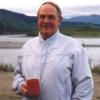 |
Richard Allison |
Richard Allison is a paleontologist who lives in Eagle, Alaska and has conducted scientific research in Yukon-Charley Rivers National Preserve. His wife, Carol Allison, was also a paleontologist who did extensive work in the region. |
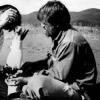 |
Skip Ambrose |
Skip Ambrose grew up in Colorado and is a wildlife biologist who has been studying raptors in Alasks since the early 1970s. Starting in 1973, he focused his research on peregrine falcons along the Yukon River and within Yukon-Charley Rivers National Preserve. He has watched the peregrine population on the upper Yukon River in Alaska climb from 12 nesting pairs in 1973 to 60 pairs in 2012. His surveys make up one of the longest-running, most consistent wildlife monitoring studies ever... Read More |
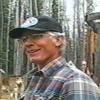 |
Andy Bassich |
Originally from Maryland, Andy Bassich moved to Alaska in 1980. He lives on the Yukon River in northeastern Alaska where he follows a seasonally-based lifestyle of fishing, hunting, and trapping. He splits his time between a home in the community of Eagle, Alaska and a remote cabin out on the river, and maintains a team of sled dogs that he uses for transportation. For twenty years, he worked as captain on the Yukon Queen tour boat that ran in the summertime on the Yukon River... Read More |
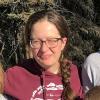 |
Michelle "Ruby" Becker |
Originally from Iowa, Michelle "Ruby" Becker moved to Eagle, Alaska in 2011. She had spent the previous twelve years living in Oregon. Ruby met her husband, Nate, online and since she was always attracted to the north and enjoyed nature and the outdoors, moving to Eagle with her two young daughters was an easy thing to do. In 2012, the Beckers bought property 32 miles below Eagle on the Yukon River (Wood Island), built a cabin that they moved into in the fall of 2013, and spent nearly ten... Read More |
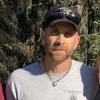 |
Nate Becker |
Originally from North Dakota, Nate Becker moved to Eagle, Alaska in 2009 to mush dogs and trap. Previously, he spent six years working as a seasonal employee for the National Park Service at Grand Canyon National Park as a flight medic and firefighter. After arriving in Eagle, Nate first worked as a winter guide for Wayne and Scarlett Hall with their business "Bush Alaska Expeditions" guiding tourists on multi-day and multi-week dog sled adventures, which later shifted into a full-time... Read More |
 |
Ray Bell |
Ray Bell and his wife, Arlene, came to Alaska in 1968 by driving a school bus converted into a motor home from Grand Rapids, Michigan. As early pioneers in Alaska, the Bells have lived a land-based, subsistence lifestyle along the Yukon River. First, in a log house they built in Central, Alaska and then in a cabin at Woodchopper Creek, which included activity at Coal Creek and at Forty Mile (forty miles above Circle). Their son, Richard Smith, also has had a camp at Forty Mile. |
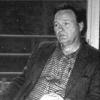 |
Bob Belous |
Born in New York City in 1935, Robert "Bob" Belous came to Alaska in 1972 and began working for the National Park Service in Anchorage. As a member of the National Park Service Task Force in Alaska, he was heavily involved in the effort to develop and pass the Alaska National Interest Lands Conservation Act (ANILCA). As part of this activity, he was the primary architect of the subsistence provisions (Title 8). Bob devoted many years of his life to the complicated subsistence issue, worked... Read More |
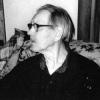 |
Gordon Bertoson |
Gordon Bertoson was born in Washington and came to Alaska when he was two or three years old. He arrived in Fairbanks in the early 1930s, and then moved to Circle shortly afterward. By 1960, he occupied a cabin at Forty Mile (mouth of Eureka Creek) along the Yukon River, where he lived a land-based subsistence lifestyle. He fished, hunted, and trapped in the Kandik River country, and traveled up the Nation River in the summer. |
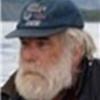 |
Jack Boone |
Born in California, Jack Boone moved to Alaska as a young man and settled in Juneau, where he started a family and built a home. He moved his family to Eagle in 1973, where he spent the remainder of his life. He was a "jack of all trades," excelling at most of his endeavors. Known as an accomplished mechanic, builder and successful businessman, he also was committed to the service of his community, serving many years on the Eagle City Council, as an assistant mayor, as a trainer and... Read More |
 |
Jean Boone |
Jean Boone moved to Eagle, Alaska in 1973 with her husband, Jack. By the early 1990s, they ran the general/hardware store, and in the 1970s and 1980s they were active in the protests in Eagle against the National Park Service when Yukon-Charley Rivers National Preserve was established and management regulations were being formulated. Local residents felt that they and their subsistence lifestyle were being pushed off of public lands. The Boones participated in a trespass in Yukon-Charley... Read More |
 |
Helge Boquist |
Originally from Sweden, Helge Boquist settled in the village of Circle, Alaska. His wife, Gladys, was an Athabascan woman whose family was also from the Circle area. According to Helge, Gladys' father worked for Jack McQuesten, a well-known trader and prospector along the Yukon River in the late 1800s; his job was to collect gold that local miners owed McQuesten. The Boquists lived a subsistence lifestyle, which included hunting, fishing and trapping, and Helge also did some gold mining at... Read More |
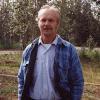 |
John Borg |
John Borg lived in Eagle, Alaska, where he lived a subsistence lifestyle of hunting and fishing, served as the mayor of the community, and worked as the postmaster at the Eagle Post Office. After establishment of the Yukon-Charley Rivers National Preserve, he was generally unhappy about the National Park Service presence in Eagle and about the effects of the Preserve on the lifestyle of the local residents. Now retired, John continues to live in Eagle year-round and is known for helping with... Read More |
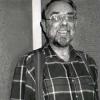 |
Zorro Bradley |
Zorro Bradley was an archeologist who worked for the National Park Service for more than 30 years. He came to Alaska in 1972 to take on the job of chief of the Cooperative Park Studies Unit (CPSU) on the University of Alaska Fairbanks campus, where he also served as adjunct professor of archeology. As one of the first National Park Service anthropologists in Alaska, he helped plan the new park areas established by passage of the Alaska National Interest Lands Conservation Act (ANILCA) in... Read More |
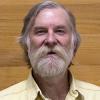 |
Randy Brown |
Randy Brown grew up in Santa Fe, New Mexico and moved to Alaska when his father, Bill Brown, took a job as historian with the National Park Service. Eventually, in the mid-1970s, Randy chose to move out in the bush and settled on the Yukon River near Eagle, Alaska. Here he lived a subsistence lifestyle based upon hunting, trapping and fishing on the Yukon, Kandik, and Nation Rivers. After marrying his wife, Karen Kallen-Brown and having two sons, the family moved into "town," but continued... Read More |
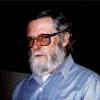 |
Bill Brown |
Born in Seattle in 1930, Bill Brown was a long-time employee of the National Park Service, working in park planning, publication writing and editing, park management, and as regional historian. He came to Alaska in 1975 and was a member of the Park Service's Alaska Task Force that conducted research and worked with local people around Alaska to better understand the areas that were to become new national parks. He played an important role in planning for Yukon-Charley Rivers National... Read More |
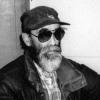 |
Albert Carroll |
Albert Carroll is from Fort Yukon, Alaska. His father, James Carroll, was a white trapper and, later, a store owner in Fort Yukon, and wrote the book First Ten Years in Alaska. Albert's mother, Fanny, was an Athabascan from the Fort Yukon-Porcupine River area. Albert grew up living a subsistence lifestyle based on hunting, fishing, trapping, and wood cutting. As a child, he accompanied his parents on their trips up the Yukon River from Fort Yukon and up the Kandik River, portaging... Read More |
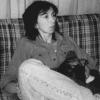 |
Faye Chamberlain |
Faye Chamberlain lived on the Yukon River at Twenty-One Mile and Six Mile near Circle, Alaska for several years while married to Richard Smith. They lived a subsistence lifestyle based on fishing, hunting, and trapping. Faye felt that establishment of Yukon-Charley Rivers National Preserve and the subsequent management regulations made it hard for local people living in the area. Later, she moved to Dawson City, Yukon-Territory, Canada. |
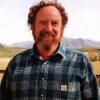 |
Donald Chase |
Donald "Don" Chase worked for the National Park Service in Alaska for many years, including at Denali National Park, Glacier Bay National Park and Preserve, and as superintendent of Yukon-Charley Rivers National Preserve. His tenure at Yukon-Charley was at the time when Preserve management, subsistence, land ownership, and mining regulations were being formulated, so he faced many challenges of balancing Park Service attitudes with the interests of local people. He went on to work at the... Read More |
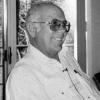 |
John E. Cook |
Born in 1936 in Arizona, John E. Cook worked for the National Park Service (NPS) for 43 years. He began his NPS career in 1953 as a seasonal packer, and then worked as a laborer, fire fighter and ranger. By 1966, he was superintendent of Canyon de Chelly National Monument, and went on to be a deputy regional director, and associate director in Washington, D.C. In 1979, he came to Alaska to be Director of National Park Service Alaska region, when new park areas were being proposed as part of... Read More |
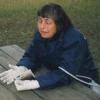 |
Laura Cross |
Laura Cross was a conservation activitst who was involved in a number of public land use and wilderness campaigns in the Lower 48. In the 1970s, she got involved with efforts to get new national parks and conservation units established in Alaska under the Alaska National Interest Lands Conservation Act (ANILCA) of 1980. In 1991, she visited Alaska to see as many of the units as she could. She continued to work on conservation and wilderness protection issues around the country. |
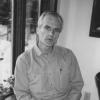 |
Dave Evans |
Dave Evans was born and raised near Boston, Massachusetts, and his family spent summers in New Hampshire. From an early age, he spent his summers working on a farm, and he speaks fondly of the hard work. After spending some time in Canada's Yukon Territory, in 1974 Dave moved to a cabin on the Nation River in eastern Alaska, where he lived a subsistence lifestyle along with many other "back to the landers." He enjoyed the remote lifestyle of fishing, hunting, trapping, and working with his... Read More |
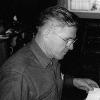 |
Ed Gelvin |
Ed Gelvin was born in 1924 at Conneaut Lake, Pennsylvania and moved to Alaska in 1949 after serving in the U.S. Navy during World War II. After six years in Fairbanks, he settled in Central, Alaska and was an ironworker and welder, miner, registered hunting guide, and aerial wolf hunter. Ed had a cabin on the upper Charley River and another one at the mouth of the river. He spent many hours flying over the country, as well as traveling overland and by river to the Charley River and the upper... Read More |
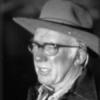 |
Bob Howe |
Bob Howe had a long career with the National Park Service. He entered the Service in the 1940's, working in various parks around the country, and came to Alaska during the period when new park areas were being established after passage of the Alaska National Interest Lands Conservation Act (ANILCA) in 1980. Throughout his tenure with the Park Service, Bob developed a reputation for getting along with people and knowing how to get around in the backcountry. He was a member of the Park Service... Read More |
 |
Karen Kallen-Brown |
Karen Kallen-Brown came to Alaska on a river trip on the Kobuk Rivere and decided to teach school in rural Alaska. In the 1970s, she married Randy Brown with whom she lived in a remote cabin on the Kandik River. They lived a subsistence lifestyle where women's activities were equally important for their daily survival even though the gender roles were fairly distinct. After having two sons and dealing with land ownership issues with the National Park Service after establishment of Yukon-... Read More |
 |
Carolyn Kelly |
Originally from California, Carolyn Kelly and her husband moved to Alaska and lived in a remote cabin at Andrew Creek in what is now Yukon-Charley Rivers National Preserve. They lived a subsistence lifestyle based upon fishing, hunting, and trapping. They developed a negative attitude towards the National Park Service after establishment of the Preserve, feeling that the management rules and regulations were too restrictive for local residents. This led them to move into the community of... Read More |
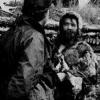 |
Charlie Kidd |
Beginning in the early 1970s, Charlie Kidd lived on the Charley River, trapping, fishing, and traveling in the country. A job on the gold dredge at Coal Creek first brought him to the region, but he fell in love with the country and remained to live a simple and sparse life of seasonal movement between fishing and hunting camps. |
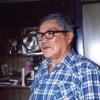 |
Matthew Malcolm |
Matthew Malcolm was born in Eagle, Alaska in 1926. His father was born in Canada and his mother in Nunuvik. He served in World War II. After returning from the war, he worked at the dredging operation at Coal Creek in 1949 and was married in 1951. After marrying his wife, Martha, he worked for the Alaska Road Commission on the Taylor Highway and continued to live a subsistence lifestyle along the Yukon River. |
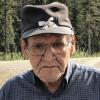 |
Micah Malcolm |
Micah Malcolm is a Han Athabascan elder from Eagle Village, Alaska. He was born in 1943 to Sarah and Edward Malcolm, one of eleven children. Micah grew up in Eagle Village living a subsistence lifestyle of hunting, trapping and fishing. His father died in 1948 when Micah was five years old, so he... Read More |
 |
Dave Mihalic |
Dave Mihalic came to Alaska in the 1970s to work as Outdoor Recreation Planner for the U.S. Bureau of Land Management in Fairbanks. He went on to work for the National Park Service in Alaska, where he was a member of the Ranger Task Force/Alaska Task Force which got him involved with the planning of new conservation units under the Alaska National Interest Lands Conservation Act (ANILCA) of 1980. He then became the first Superintendent at Yukon-Charley Rivers National Preserve, where he... Read More |
 |
Paul Nathaniel |
Paul Nathaniel is from Circle, Alaska. Being of Athabascan heritage, his ancestors have been living off the land and rivers in the region for many generations. In particular, he has ties that date back to at least the 1950s to the site at Forty Mile on the Yukon River where Richard Smith has a cabin. Paul has spent his life living a traditional subsistence lifestyle of fishing, hunting and trapping along the Yukon River and in the area of what is now Yukon-Charley Rivers National Preserve.... Read More |
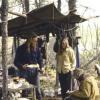 |
Sage Patton |
In the 1970s, Sage Patton lived in remote cabins on the Yukon and Nation Rivers in what is now Yukon-Charley Rivers National Preserve in northeastern Alaska. She and her then husband, Dave Evans, spent ten years living a simple, subsistence-based life of seasonal movement based upon fishing, hunting and trapping opportunities. In the 1990s, Sage was living in Fairbanks, Alaska and working for the U.S. Forest Service's Institute of Northern Forestry. |
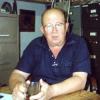 |
Stanton Patty |
Stanton (Stan) H. Patty was born in Fairbanks in July 1926 and is the middle son of Ernest and Kathryn Patty. His father was the first professor of geology at the Alaska Agricultural College and School of Mines in Fairbanks (later named the University of Alaska), managed the mining interests of General A.D. McRae at Coal Creek and Woodchopper Creek in what is now Yukon-Charley Rivers National Preserve, and in 1954, became the third president of the University of Alaska. As a young boy, Stan... Read More |
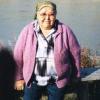 |
Louise Paul |
Louise Paul was a Han Athabascan elder from the village of Eagle, Alaska. Her parents were Eliza and Joe Malcolm. She grew up following a traditional subsistence lifestyle of hunting, trapping, fishing, and berry picking in the upper Yukon River region. After she married, Josie Paul, they lived for some time on Snare Creek and at the Coal Creek Mining camp where he worked. In her later years, Louise Paul was known for her expertise in her Native Han language and worked with linguists at the... Read More |
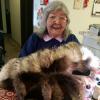 |
Ruth Ridley |
Ruth Ridley is a Han Athabascan elder from Eagle Village, Alaska who was born in 1950 to Louise and Josie (Susie) Paul. Her mother's parents were Eliza and Joe Malcolm of Eagle Village, and her dad’s parents were Elizabeth and Paul Josie of Old Crow, Yukon Territory, Canada. She grew up in Eagle Village and and living at... Read More |
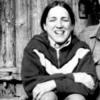 |
Lynette Roberts |
Originally from Oregon, Lynette Roberts came to Alaska in 1974 and moved to Eagle with her husband, Steve Ulvi, and his brother, Dana. They soon moved out into the country and lived in remote cabins they built on the Kandik and Nation Rivers in what is now Yukon-Charley Rivers National Preserve. They lived a simple, "no frills" subsistence lifestyle based on hunting, fishing, trapping, and doing as much from scrath and by hand as possible. She was an equal participant, although there turned... Read More |
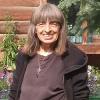 |
Elisabeth Sager |
Originally from Munich, Germany, Elisabeth Sager came to Alaska in 1974 with her then husband, Mike Sager. After a brief stay in Anchorage, they moved into a cabin at Mendeltna Creek near Glennallen, where they learned about subsistence and how to live a remote lifestyle from local Native families. After a brief stint in Homer, they wanted to return to more remote living and chose to go to Eagle, Alaska, located on the Yukon River. In 1975, they built a cabin at Trout Creek, a tributary of... Read More |
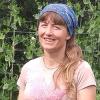 |
Sonja Sager |
Sonja Sager was born in 1979 in Eagle, Alaska to Elisabeth and Mike Sager. She grew up at their remote cabin on Trout Creek, about 40 miles down the Yukon River from Eagle, where she enjoyed a nature-based childhood and a semi-nomadic winter lifestyle of traveling by dogteam and moving between cabins along a trapline. Her sister, Iris, was born at Trout Creek in 1983. Around 1988, the family moved into Eagle, where Sonja finished school and made many friends both in Eagle and in the Native... Read More |
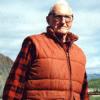 |
Jim Scott |
Originally from Minnesota, Jim (James W.) Scott came to Alaska in 1946 and settled in Homer, Alaska. He worked a variety of jobs from logging in Southeast Alaska to surveying road routes for the Alaska Road Commission, to ranger and district manager for the Bureau of Land Management, Division of Forestry. From 1959 to 1960, Jim and his wife, Elva (who he married in 1942), lived in Fairbanks, from 1960 to 1972 they were in Anchorage, and in 1972 when Jim retired, they moved to Eagle, Alaska.... Read More |
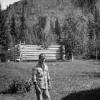 |
Richard Smith |
Originally from Michigan, Richard Smith came to Alaska in the 1970's with his mother and stepfather, Arlene and Ray Bell, who settled in Central, Alaska. Richard worked on the dredge at the Coal Creek mine in the late 1970s and has a cabin at Forty Mile on the Yukon River, up river from the village of Circle. He has spent many years living a subsistence-based seasonal lifestyle at the cabin, on the river, and at Woodchopper Creek, where he traps for a living and hunts and fishes to sustain... Read More |
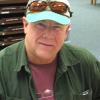 |
Brad Snow |
In 1974, Brad Snow and Lilly Allen hand-built a log cabin on the Nation River in northeastern Alaska, about five miles up from the confluence with the Yukon River. They lived off the land - hunting, fishing, and trapping - and traveled the country by canoe in the summer and by dogteam in the winter. They later moved into the community of Eagle, Alaska. They were part of a larger group of cabin dwellers in this part of the Yukon who worked together to make a life for themselves in the country... Read More |
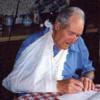 |
Al Stout |
Al Stout was an early pioneer in Alaska who did a variety of things, including working on the Whitehorse-Dawson telegraph, working at Circle Hot Springs starting in 1933, mining at Mission Creek, and trapping at Forty Mile and other places along the Yukon River. He settled in Eagle, Alaska, from where he traveled up and down the Yukon River by boat in the summer and dogteam in the winter. He spent time mining at Coal Creek, Woodchopper Creek, and Seventy Mile. He enjoyed hunting and... Read More |
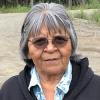 |
Bertha Ulvi |
Bertha Ulvi is a Han Athabascan elder from Eagle Village, Alaska who was born in 1944 to Louise and Josie (Susie) Paul. Her mother's parents were Eliza and Joe Malcolm of Eagle Village, and her dad’s parents were Elizabeth and Paul Josie of Old Crow, Yukon Territory, Canada. She grew up in Eagle Village and living at Snare Creek and the Coal Creek mining camp where her father was working. They lived a... Read More |
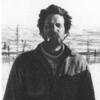 |
Steve Ulvi |
Born in Walnut Creek, California in 1951 and educated at the University of Oregon, Steve Ulvi came to Alaska in 1974 with his brother, Dana, and homesteaded on the Yukon River near Eagle. He married Lynette Roberts and they moved to Fairbanks when their children became of school age. Steve became a subsistence specialist for Yukon-Charley Rivers National Preserve and Gates of the Arctic National Park. He was interviewed for the Yukon-Charley Rivers National Preserve Project Jukebox because... Read More |
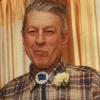 |
Joe Vogler |
Joe Vogler was a miner, land developer and founder of the Alaska Independence Party. He was born and raised in Kansas, and came to Alaska in 1942, at the age of eighteen. He worked construction on military bases, first at Kodiak, later in interior Alaska, and ended up with extensive real estate holdings around Fairbanks and mining claims in other parts of Alaska. Joe was an outspoken critic of government, advocated Alaska's secession from the Union, and made three unsuccessful bids for... Read More |
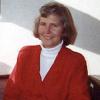 |
Melody Webb |
In the early 1970s, Melody Webb worked for the National Park Service in Fairbanks, Alaska on Native Historic and Cemetery Sites studies. She also conducted historical research in the Wrangell-Saint Elias area and the Yukon-Charley Rivers area, in particular a historic resource study where she traveled with and was guided by Dave Evans, a former resident of the Nation River. Melody published a number of works on Alaska, including her book, The Last Frontier: A History of the Yukon Basin of... Read More |
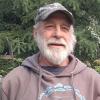 |
Don Woodruff |
Born in Long Beach, California and moving around a lot as part of a military family, Don Woodruff came to Alaska in the 1970s and studied ceramics at the University of Alaska Fairbanks. After a float trip on the Yukon River, Don was enthralled with the place, and in 1978 built a remote cabin at Washington Creek and settled there with his family. They lived a subsistence-based lifestyle relying upon fishing, hunting, trapping, and berrypicking. He eventually built another cabin up the Kandik... Read More |
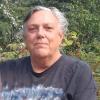 |
Jan Woodruff |
Having grown up in various places with a military family, Jan Parish Woodruff came to Alaska when she was sixteen after her father was transferred to Cordova. After graduating from nursing school in Key West, Florida, she returned to Alaska. She worked as nurse in different parts of Alaska, including in Seward, when she decided she wanted to live out where ther were fewer people. She moved to Eagle, Alaska in May 1997. She met and married Don Woodruff, and they settled at his remote cabin on... Read More |


